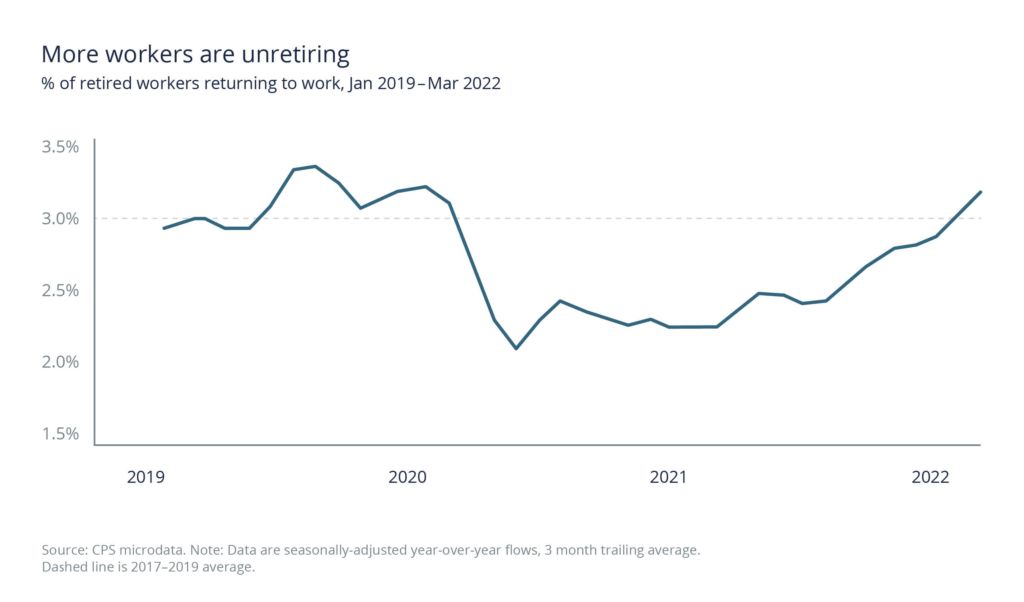Blog
Return-To-Office Ergonomic Recommendations for an Aging Workforce
This blog post can also be found on our Coronavirus Resource Center.
As local and federal regulations enacted to prevent the spread of COVID-19 continue to relax, many employees have returned to the workplace or will be returning soon. Many of those returning workers—especially those aged 55 and over—would benefit from better attention to on-the-job ergonomics.
Workplace ergonomics is the science of designing the workplace with the physical capabilities and limitations of the worker in mind. Poor design can lead to tired, frustrated, and even injured employees. Improved ergonomics can provide a better work experience for your employees and more productivity for your business. This article offers an overview of recommendations you can take for older workers and those of all ages.

How the Pandemic has Affected Older Workers
Although a sizable number of older people exited the workforce during the pandemic, there are signs that the trend is rebounding.
A recent study by the Center for Retirement Research (CRR) at Boston College found that about 15% of workers aged 55 and over left the workforce in any given year before the pandemic. That percentage rose sharply—and quickly—to 31.5% in April 2020 However, the numbers indicate that many older workers planned to re-enter the workforce. And they are doing just that. According to March 2022 data from the Census Bureau, 3.2% of workers who had "retired" the year before were back at work.
Older Workers Are Returning to the Workforce
According to the US Bureau of Labor Statistics, one in four US workers will be age 55 or older by the end. As the nation’s workforce ages, employers need to emphasize how they can meet the physical changes that come along with getting older.

The Importance of Ergonomics
Whether employees are returning to a physical office space, retail, or manufacturing location, or working from home, an aging workforce cannot meet the production demands without a heightened risk of musculoskeletal injuries and the effects of the natural degeneration of the body.
Older workers are especially prone to low back stiffness. Employees who must manually lift objects should be trained to keep the object close to their body, remove obstacles between the object and body, and avoid extended reaching and bending during lifting. To reduce cumulative trauma injuries and aggravating pre-existing conditions common to older workers, such as arthritis and diabetes, encourage stretch breaks. For example, employees might take five-minute breaks for every forty-five minutes of repetitive activity.
There is also a higher risk of falls for older workers due to balance and equilibrium and vision and depth perception changes that come with aging. To reduce slips and falls, keep walkways in good condition and ensure proper illumination for well-traveled areas. Also, encourage appropriate fitting footwear with low heels and non-slip soles.
Some of the primary ergonomic risk factors for all workers include repetitive motion, reaching, bending, stooping, and awkward postures such as wrist deviation.
Employers should proactively address these issues to prevent injuries and accidents and increase productivity by decreasing employee fatigue and discomfort. The three categories that employers need to consider in terms of ergonomics are pre-hire, ongoing, and post-injury.
We offer the following recommendations for each area.
1. Steps for pre-hire: Involve ergonomists in designing any new work areas and in the set-up of remote workstations. Include them in the pre-construction meetings if you’re planning a new building. Your insurance carrier’s risk control specialists are a valuable resource for ergonomics information.
Apply functional employment testing—also known as fit-for-duty testing—during the hiring process to make sure candidates are physically capable of performing the job. This type of testing will check a candidate’s ability to lift, stand, reach, and perform other physical activities.
Critical to injury prevention, functional employment testing is typically conducted after an employment offer has been made. Check with your legal counsel to make sure you are compliant.
2. Ongoing strategies: Prepare formal job descriptions that include a detailed explanation of the body mechanics and physical demands required for each position. If you need help getting started, your WC claims administrator or Woodruff Sawyer representative can provide job description templates. Educate employees on how to handle objects with minimal impact to the areas of the body most vulnerable to injury. Supervisors should monitor employee behavior and provide feedback that addresses any areas of concern.
Pay special attention to footwear, especially the risks associated with walking, standing, or climbing work surfaces. Workplace footwear should be slip-resistant and designed for standing on any hard surfaces in the work environment. When used in conjunction with proper footwear, anti-fatigue mats help reduce compression forces to the lower back, knees, and ankles.
For occupations that require continuous physical activity, establish a program that includes regular stretching, flexing, and strengthening the muscles associated with sprains, strains, and other workplace injuries.
Your workforce must accept ergonomic interventions for them to be effective. Establishing an Ergonomics Steering Committee can help establish a culture of safety.
3. Post-injury guidelines: Consider providing on-the-job rehabilitation, which allows an injured employee to complete physician-recommended exercise and strengthening activities during their work shift without taking time off from work. This is a proactive way to help employees recover and heal sooner from their injuries.
To eliminate or reduce the indemnity (lost-time) costs of the claim, the best practice is to provide modified or alternate return-to-work (transitional work) to help keep the injured employee physically active, engaged, and motivated. This practice can significantly lower litigation rates as well
Encourage routine primary care physician visits for any health issues unrelated to work. When a
workplace injury occurs, other medical problems can exacerbate the workplace injury and interfere with the healing process.
Keep Careful Track of Any Injury Trends
Finally, periodically review your workers’ compensation loss experience to identify any loss trends regarding causes of injuries and the most common body parts injured to pinpoint specific loss control and safety measures.
Consult with your broker and insurance carrier professionals to develop a strategy that prioritizes the specific work areas that have ergonomics issues. Solutions may include engineering work redesign, administrative modifications, work practice changes, and equipment controls.
For more information on ergonomics in the workplace and steps you can take to keep your employees safe on the job, please contact your Woodruff Sawyer representative.
Table of Contents












